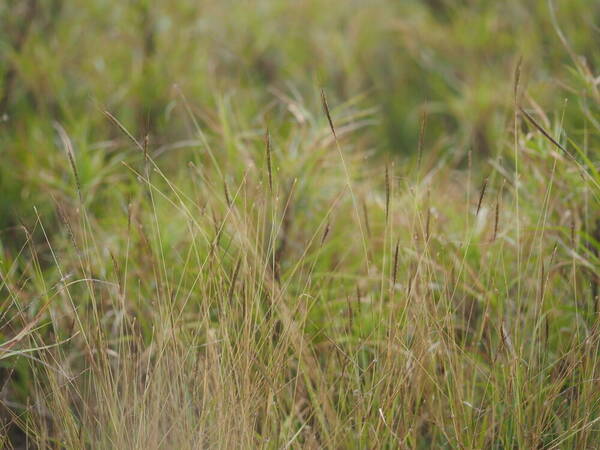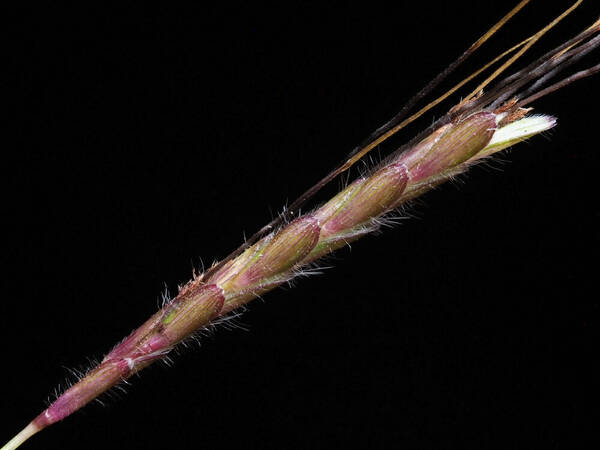Info
Subfamily: Panicoideae
Genus etymology: Dichanthium = "paired flower" [Greek] refering to the difference between the basal homogamous and the other heterogamous spikelets
Species etymology: caricosum = "pertaining to Carex L." [Latin] refering to a similarity to the sedge genus Carex
Photosynthetic type: C4 (warm season)
Nativity: naturalized - accidental
First recorded in Hawaiʻi: 2023
Map

Inflorescence



Plant



Habit





Spikelets



Landscape

Node

Peduncle of inflorescence

Description
Perennial, stoloniferous. Culms tufted at nodes of stolons, geniculately ascending, 30–60 cm tall, nodes glabrous or pubescent. Leaf sheaths compressed, keeled, shorter than internodes; leaf blades flat, 15–20 cm × 2.5–5 mm, glabrous or with a few hairs at base, margins smooth or scabrid, apex acuminate; ligule less than 1 mm, margin ciliate. Inflorescence terminal; peduncle glabrous; racemes (1–)2–4, 2.5–5 cm, with 1–3 pairs of homogamous spikelets. Sessile spikelet 3–3.5 mm; lower glume obovate-elliptic or obovate-oblong, papery, 8–12-veined, glabrous or often sparsely hirsute on lower back, slightly glossy, margins shortly ciliate, keels winged, apex rounded; upper glume ciliate above middle, apex obtuse; awn 1.5–2.5 cm, weakly geniculate. Caryopsis obovate-oblong. Pedicelled spikelet many-veined, resembling sessile. Fl. and fr. Oct–Mar. 2n = 20, 40.
(Description source: Wu, Z.Y., Raven, P.H. & Hong, D.Y. (eds.). 2006. Flora of China. Volume 22. Poaceae. Missouri Botanical Garden Press, St. Louis. 733 pp. )